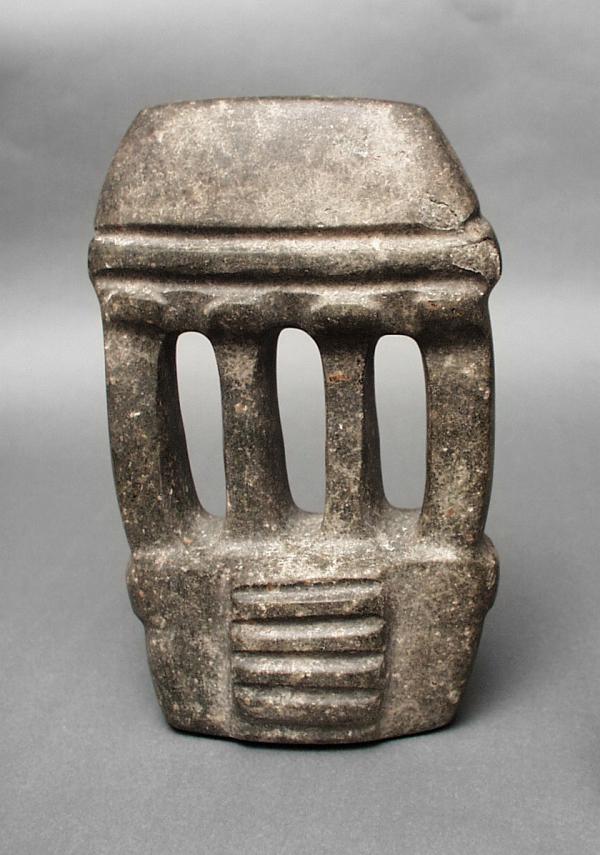LACMA’s Art of the Ancient Americas collection houses a series of simple, yet enigmatic, architectural models, crafted by the ancient inhabitants of Guerrero, Mexico. Through painstaking drilling, sawing, and polishing with stone tools, master artisans elicited clean, elegant lines from unyielding materials like andesite and metadiorite. These effigies have long attracted attention for the beauty of their simplicity; yet, much about them remains a mystery.
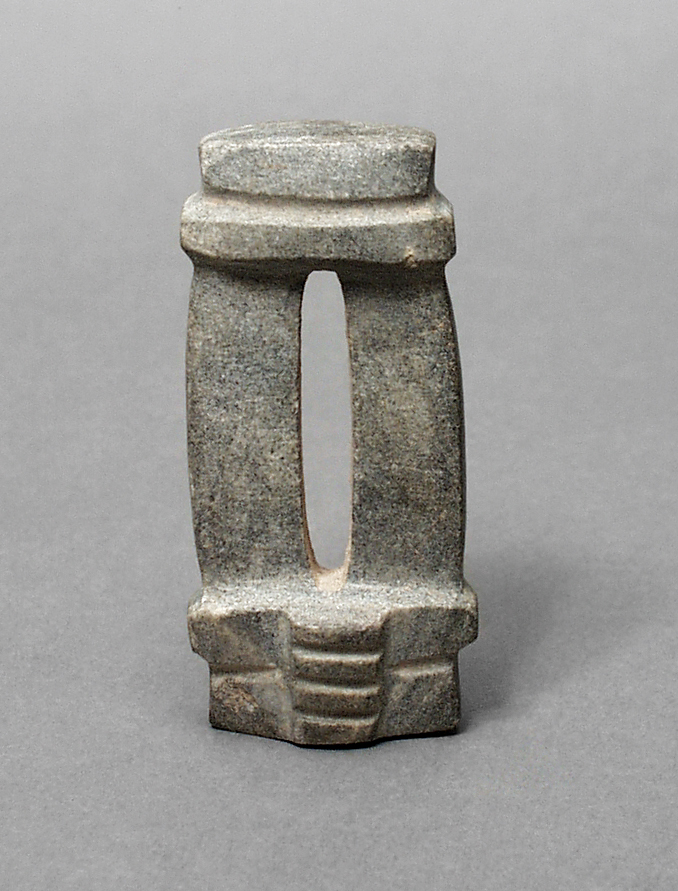
Architectural models like these comprise part of the Mezcala artistic tradition, known for its abstract, geometric renderings of human, animal, and architectural forms in hard stone. The tradition is named for the region of Guerrero, Mexico where these objects first started to appear on the art market, but their original context is in large part unknown. Before being acquired by museums, most Mezcala objects were looted illicitly and sold into private collections. Complicating matters, the demand for Mezcala effigies in the mid-20th century motivated modern artisans to produce forgeries, which are often difficult to distinguish from ancient objects. However, researchers can assess in some ways if an object is a modern replica (e.g., looking for markings left by metal tools, which would have been unavailable to ancient artists), and research into the authenticity of the Mezcala objects in LACMA’s collection is ongoing.
To make matters more complicated still, there has been little archaeological research in Guerrero, and, due to the widespread practice of illegal looting, few archaeological excavations have been able to recover and document Mezcala effigies in their original contexts. Based on the research that has been done so far, we know that Mezcala artisans were producing their works during the Middle-to-Late Formative period (c. 500 BCE–300 CE), and that most of the objects currently in museum collections likely came from burials. Beyond this, unfortunately, we know very little about the ancient people who produced them.
Nevertheless, what can Mezcala architectural models tell us about themselves? Effigies like these are often referred to as “temple models” because they bring to mind the collonaded facades of ancient Greek temples for those familiar with Classical Mediterranean architecture. However, similar structures have not been documented in ancient Guerrero. More likely, they depict houses rendered in two dimensions. Wooden pole-and-thatch houses constructed atop masonry platforms are common in indigenous Mesoamerican communities both ancient and modern.
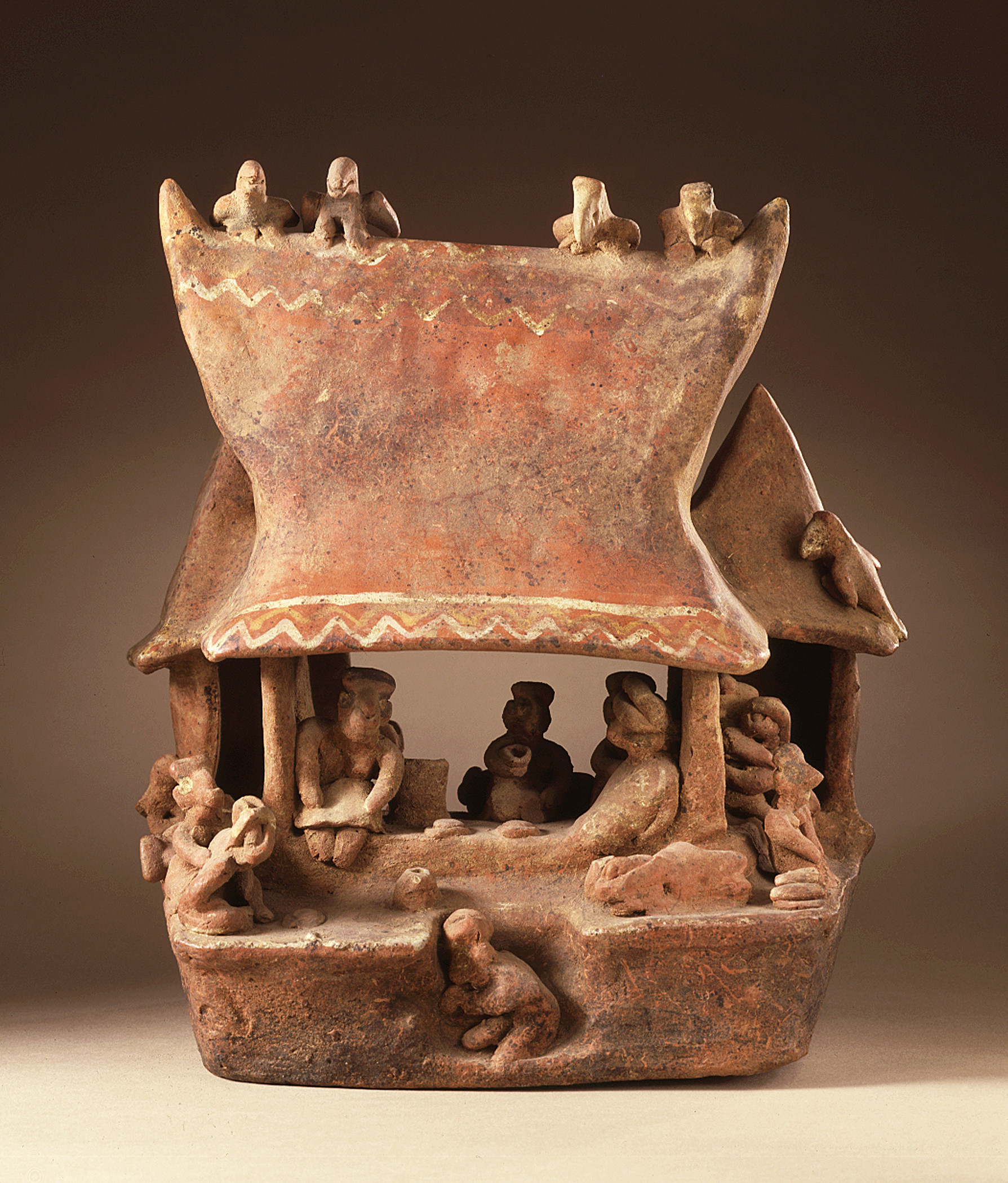
Ancient artisans in Nayarit, Mexico sculpted three-dimensional representations of such houses out of clay—an evocative example of which is part of LACMA’s collection (above). Mezcala artists flattened out this standard form: a single row of poles or mainposts stand on top of a platform with a central staircase, depicted using simple incisions to demarcate the steps.
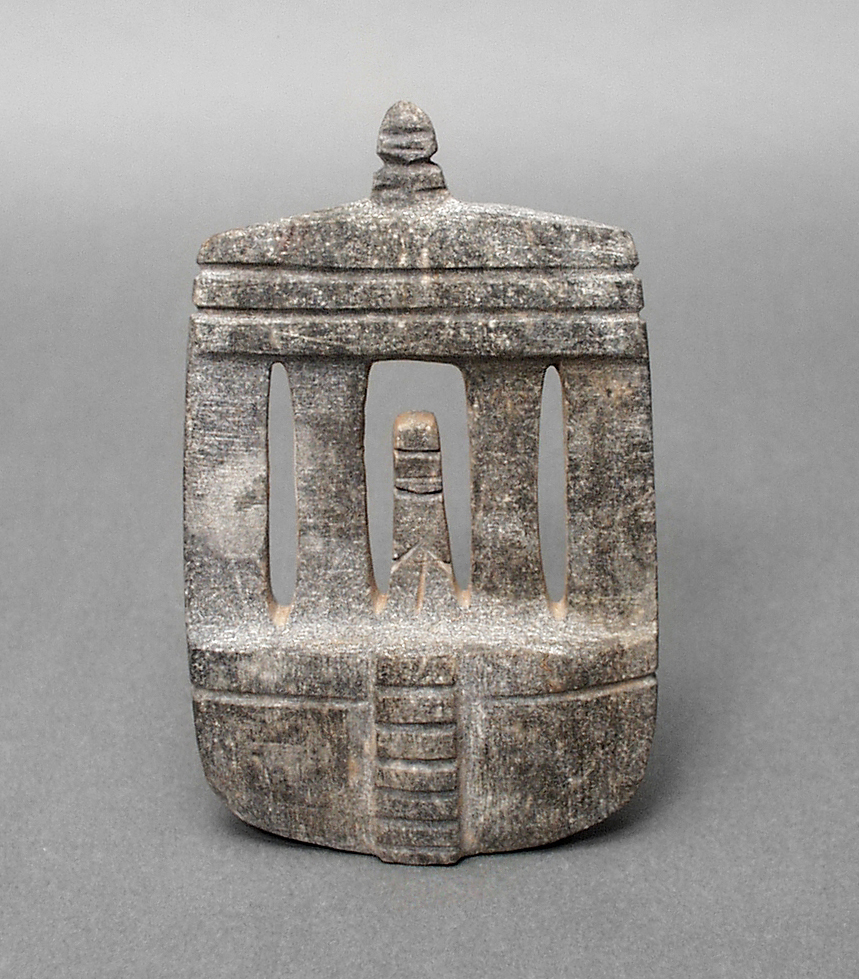
Other iconographic elements are more varied. Some effigies have the sloping lines of a traditional hip roof, others have flat tops that may correspond with crossbeams or lintels. In some models (e.g., above), human figures have been carved standing between the central mainposts, sitting on the roof, or lying supine across the lintel.
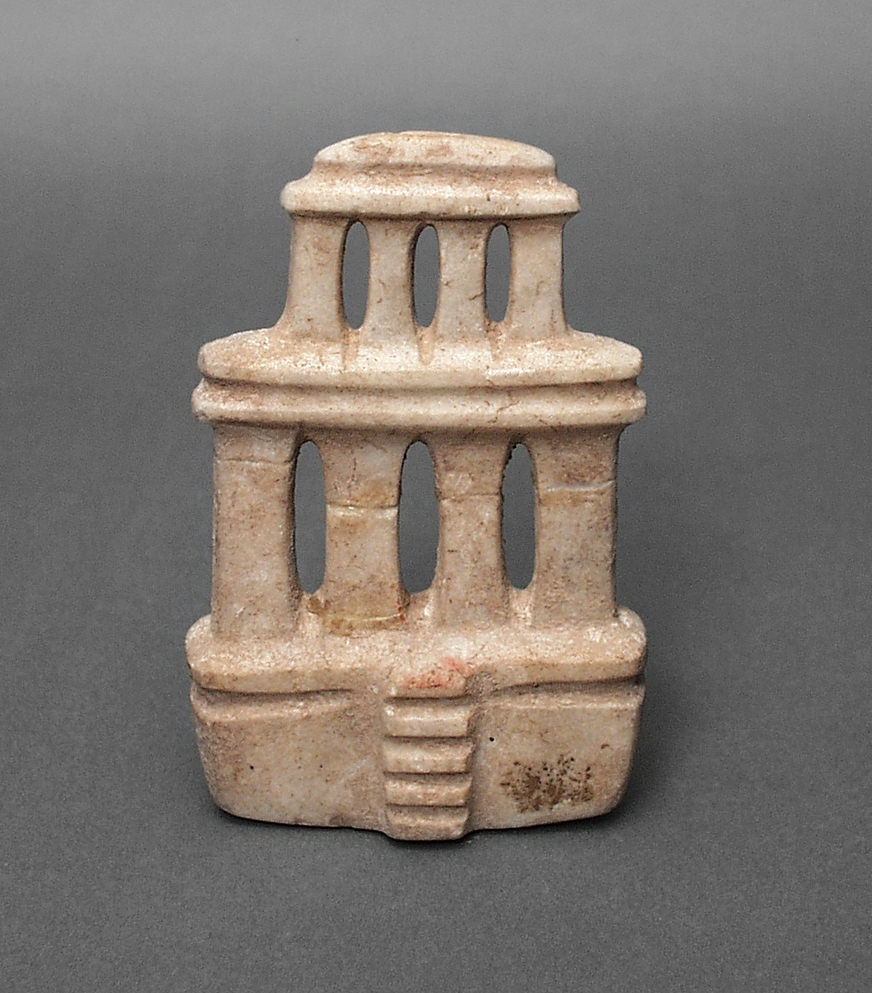
In one unusual example above, a small architectural model adjoins a larger one beneath it, giving the appearance of two stories. While this variability is hard to understand, one can imagine that a variety of scenes—and even different kinds of structures—are being referenced.
For many indigenous societies of Mesoamerica, life’s most important activities happen in the house and its surrounding patio: you are born there; you learn and grow there; you eat, work, and sleep there; and, when your time comes, you will be buried there, too. Beyond its daily importance, the house is also invested with immense sacred and symbolic meaning. For instance, among the modern Tzotzil Maya of Chiapas, Mexico, houses are considered animate beings with souls that need to be nourished through ritual offerings. In turn, the house protects its occupants from the dangers of the surrounding wilderness. Aztec, Mixtec, and Maya sources indicate that the house was believed to replicate the moral order of the universe, which in Mesoamerican belief has four sides and four corners. The four mainposts of a traditional house embody these world corners, recreating the universe on a small scale. In the K’iche’ Maya account of creation, the Popol Vuh, the creator gods are said to have created this four-sided cosmos by measuring its lengths with a cord, which is a technique that is still used to plan houses in Yucatec Maya communities today. Simply, a Mesoamerican house is the cosmos writ small, and the cosmos are a house writ large.
While we know little of the ancient inhabitants of Guerrero, it’s plausible that they shared many of the same beliefs about houses with their fellow Mesoamericans. By including architectural models like these in burials, Mezcala artisans may have been supplying the interment with its own cosmic order, protecting the deceased with this sacred space in effigy. Yet, these interpretations are hard to confirm without additional contextual evidence. Future research and archaeological investigation will hopefully soon reveal more about Mezcala effigies and the people who they accompanied in death, so that these enigmatic objects may be understood with better clarity.
For further reading
Covarrubias, Miguel. 1956. Mezcala: Ancient Mexican Sculpture. New York: André Emmerich Gallery.
Gay, Carlo.1987. Mezcala Architecture in Miniature. Brussels: Palais des Académies.
Gay, Carlo, and Frances Pratt. 1992. Mezcala: Ancient Stone Sculpture from Guerrero, Mexico. New York: Balsas Publications.
Paradis, L.-I., C. Bélanger, D. Raby, and B. Ross. 1990. “Le Style Mezcala Découvert en Contexte au Guerrero (Mexique).” Journal de la Société des Américanistes 76: 199-212.
Sarro, Patricia Joan, and James Doyle. 2015. “Monumental Imaginings in Mesoamerican Architectural Models,” in Design for Eternity: Architectural Models from the Ancient Americas, by Joanne Pillsbury, Patricia Joan Sarro, James Doyle, and Juliet Wiersema, pp. 31-53. New York: The Metropolitan Museum of Art.



